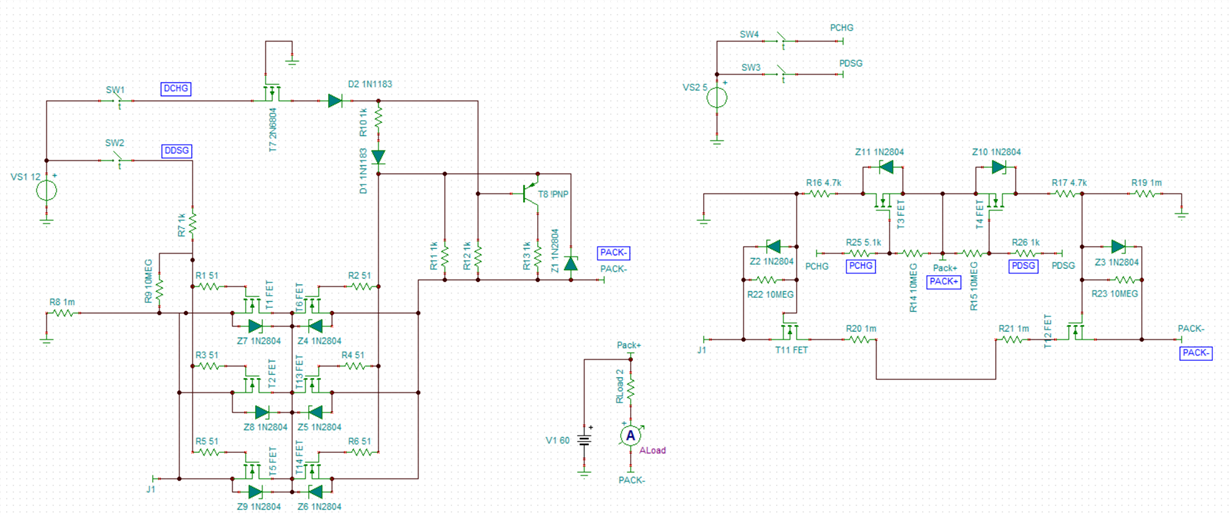Other Parts Discussed in Thread: BQ76942, TINA-TI
Hi,
I have been trying to achieve low-side FET switching, as there is no reference in datasheet.
I have followed following references in videos section called "BQ76942 / BQ76952 battery monitors: FET configurations and cell balancing"
And following thread
So far, I have created following schematic and need some help in verifying it:
I still need to calculate passive values.
Regards,
Anurag






